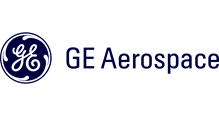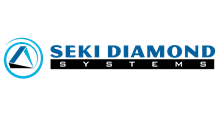
December 1 - 6, 2024
Boston, Massachusetts
Symposium Supporters
2024 MRS Fall Meeting & Exhibit
SF05.13.01
Attempts of L-PBF processing using the gas-atomized Al–2.5Fe–2Mn or Al–2.5Fe–2Cu (mass%) ternary alloy powder with an average particle size of about 20 mm were made in this study. Rectangular alloy samples were fabricated using a metal AM ProX DMP 200 machine (3D Systems, USA) under a wide range of laser scan speed (0.6 ~ 1.4 m/s) and laser power (102 ~ 204 W). The applied laser-scanning hatch distance, powder-bed thickness, and beam focus size were 0.1 mm, 0.03 mm, and ~0.1 mm, respectively. The results of measuring the sample density provided the optimum laser parameter sets for the manufacturing of both alloy samples with high relative densities above 99 %, indicating high L-PBF processability for the Mn or Cu-added Al–Fe alloy powders. The L-PBF manufactured samples exhibited microstructure consisting of a number of melt pools in which regions locally melted and rapidly solidified due to scanning laser irradiation. The added Mn element was partitioned into the refined Al6Fe phase, resulting in the formation of the Al6(Fe, Mn) phase with an orthorhombic structure (oC28). A certain amount of solute Mn (approximately 0.8 mass%) was detected in the a-Al matrix. Numerous nanoscale particles of the Al6(Fe, Mn) phase were homogeneously dispersed in the α-Al matrix, whereas relatively coarsened Al6(Fe, Mn) phases with a cellular morphology appeared localized along melt-pool boundaries. Similar microstructures containing the Al23CuFe4 phase (orthorhombic, oC28) were observed in the L-PBF processed Al–2.5Fe–2Cu alloy samples. These results indicate the added third element could stabilize the refined Al6Fe phase formed in rapid solidification by the L-PBF process. The design concept provides new insights for the combined addition of Mn and Cu to Al–Fe alloys. Both added Mn and Cu elements might stabilize the Al6Fe phase (corresponding to the formation of (Al, Cu)6(Fe, Mn) phase), providing the larger driving force for the formation of the Al6Fe phase for strengthening. The design based on the Al–Fe–Cu– Mn quaternary system has the potential to achieve both superior mechanical performance and sufficient L-PBF processability.
Alloy Design for Control of Al6Fe Intermetallic Phase by Laser Powder Bed Fusion
When and Where
Dec 5, 2024
1:30pm - 2:00pm
1:30pm - 2:00pm
Hynes, Level 2, Room 203
Presenter(s)
Co-Author(s)
Naoki Takata1,Wenyuan Wang1,Yue Cheng1,Takanobu Miyawaki1,Asuka Suzuki1,Makoto Kobashi1,Masaki Kato2
Nagoya University1,Aichi Center for Industry and Science Technology2
Abstract
Naoki Takata1,Wenyuan Wang1,Yue Cheng1,Takanobu Miyawaki1,Asuka Suzuki1,Makoto Kobashi1,Masaki Kato2
Nagoya University1,Aichi Center for Industry and Science Technology2
In recent, laser powder bed fusion (L-PBF) has emerged as one of the most representative metal additive manufacturing techniques capable of producing metallic components by using a scanning laser beam to selectively melt consecutive bedded powder layers. The L-PBF process enables not only the manufacturing of complex geometrical forms but also the fabrication of Al alloys with superior mechanical properties. The L-PBF manufactured Al–2.5Fe (mass%) binary alloy exhibits a high tensile strength of approximately 300 MPa due to the fine morphology of the Al6Fe metastable phase (orthorhombic, oC28). The strength level slightly decreases after long-term exposure at elevated temperatures, indicating the feasibility of employing lightweight, heat-resistant materials. However, increasing Fe alloy content significantly reduces L-PBF processability due to the formation of coarsened Al13Fe4 stable phase. It is, therefore, required to stabilize the refined Al6Fe phase by third alloy elements for further strengthening without a loss of L-PBF processability for Al–Fe alloys. The present study was undertaken to investigate the effect of selected third elements (Mn and Cu) on the microstructure and mechanical properties of the Al–Fe binary alloy additive manufactured by the L-PBF process.Attempts of L-PBF processing using the gas-atomized Al–2.5Fe–2Mn or Al–2.5Fe–2Cu (mass%) ternary alloy powder with an average particle size of about 20 mm were made in this study. Rectangular alloy samples were fabricated using a metal AM ProX DMP 200 machine (3D Systems, USA) under a wide range of laser scan speed (0.6 ~ 1.4 m/s) and laser power (102 ~ 204 W). The applied laser-scanning hatch distance, powder-bed thickness, and beam focus size were 0.1 mm, 0.03 mm, and ~0.1 mm, respectively. The results of measuring the sample density provided the optimum laser parameter sets for the manufacturing of both alloy samples with high relative densities above 99 %, indicating high L-PBF processability for the Mn or Cu-added Al–Fe alloy powders. The L-PBF manufactured samples exhibited microstructure consisting of a number of melt pools in which regions locally melted and rapidly solidified due to scanning laser irradiation. The added Mn element was partitioned into the refined Al6Fe phase, resulting in the formation of the Al6(Fe, Mn) phase with an orthorhombic structure (oC28). A certain amount of solute Mn (approximately 0.8 mass%) was detected in the a-Al matrix. Numerous nanoscale particles of the Al6(Fe, Mn) phase were homogeneously dispersed in the α-Al matrix, whereas relatively coarsened Al6(Fe, Mn) phases with a cellular morphology appeared localized along melt-pool boundaries. Similar microstructures containing the Al23CuFe4 phase (orthorhombic, oC28) were observed in the L-PBF processed Al–2.5Fe–2Cu alloy samples. These results indicate the added third element could stabilize the refined Al6Fe phase formed in rapid solidification by the L-PBF process. The design concept provides new insights for the combined addition of Mn and Cu to Al–Fe alloys. Both added Mn and Cu elements might stabilize the Al6Fe phase (corresponding to the formation of (Al, Cu)6(Fe, Mn) phase), providing the larger driving force for the formation of the Al6Fe phase for strengthening. The design based on the Al–Fe–Cu– Mn quaternary system has the potential to achieve both superior mechanical performance and sufficient L-PBF processability.
Keywords
additive manufacturing | alloy | microstructure
Symposium Organizers
Yoshisato Kimura, Tokyo Institute of Technology
Florian Pyczak, Helmholtz-Zentrum Hereon
Petra Spörk-Erdely, Graz University of Technology
Akane Suzuki, GE Aerospace Research
Symposium Support
Gold
GE Aerospace Research
GE Aerospace Research
Session Chairs
Bronislava Gorr
Kirill Kovnir




